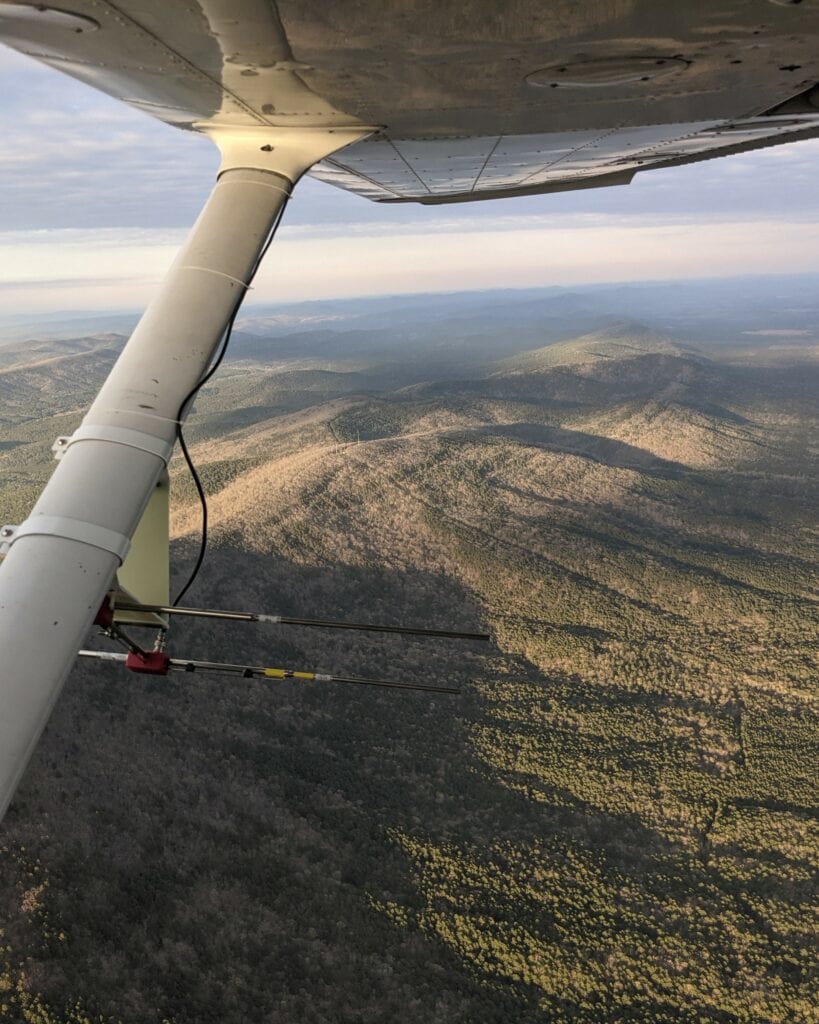Copperhead Environmental Consulting x Indiana bats
ENDANGERED SPECIES
Wildlife Drones has been working with Copperhead Environmental Consulting to track federally endangered Indiana bats.
Weighing on average just seven grams, these microbats can only be tracked with a tiny VHF radio transmitter (approximately 0.32g). However due to their agile nature, tracking them on foot through vast and steep terrain as they migrate across the country is a near impossible task.
As a result, Copperhead would take to the skies to manually radio-track from their Cessna 172 fixed-wing aircraft. Yet despite being able to cover vast areas, trying to track the signals of each bat one at a time still proved to be a difficult challenge.
That’s why Wildlife Drones’ solution was so exciting to the Copperhead team. Up until now, Wildlife Drones had only been used on drones. But for the first time, we have been working in collaboration with Copperhead to adapt our technology to be used from a fixed-wing aircraft.
With the development of new and innovative features, this technology has been a gamechanger for them during their testing phase. Not only have they saved time and effort by tracking up to 40 tagged bats simultaneously, but receiving real-time locations have also proven useful for informing their team on the ground on where to find them.
Using Wildlife Drones from a fixed-wing aircraft, we’ll be able to search for all our bats at the same time and dramatically cut down our total flight time and expenses.
Will Seiter
Biologist, Copperhead Environmental Consulting


Categories: #ThreatenedSpecies











